4.k8s的附加组件
4.1 dns服务
安装dns服务
1:下载dns_docker镜像包
wget http://192.168.12.201/docker_image/docker_k8s_dns.tar.gz
2:导入dns_docker镜像包(所有节点或者node2节点)
3:修改skydns-rc.yaml,指定13的机器,该功能可加可不加
spec:nodeSelector:kubernetes.io/hostname: 192.168.111.13containers:
上传文件skydns-rc.yaml
# Copyright 2016 The Kubernetes Authors.
#
# Licensed under the Apache License, Version 2.0 (the "License");
# you may not use this file except in compliance with the License.
# You may obtain a copy of the License at
#
# http://www.apache.org/licenses/LICENSE-2.0
#
# Unless required by applicable law or agreed to in writing, software
# distributed under the License is distributed on an "AS IS" BASIS,
# WITHOUT WARRANTIES OR CONDITIONS OF ANY KIND, either express or implied.
# See the License for the specific language governing permissions and
# limitations under the License.# TODO - At some point, we need to rename all skydns-*.yaml.* files to kubedns-*.yaml.*
# Should keep target in cluster/addons/dns-horizontal-autoscaler/dns-horizontal-autoscaler.yaml
# in sync with this file.# __MACHINE_GENERATED_WARNING__apiVersion: extensions/v1beta1
kind: Deployment
metadata:name: kube-dnsnamespace: kube-systemlabels:k8s-app: kube-dnskubernetes.io/cluster-service: "true"
spec:replicas: 1# replicas: not specified here:# 1. In order to make Addon Manager do not reconcile this replicas parameter.# 2. Default is 1.# 3. Will be tuned in real time if DNS horizontal auto-scaling is turned on.strategy:rollingUpdate:maxSurge: 10%maxUnavailable: 0selector:matchLabels:k8s-app: kube-dnstemplate:metadata:labels:k8s-app: kube-dnsannotations:scheduler.alpha.kubernetes.io/critical-pod: ''scheduler.alpha.kubernetes.io/tolerations: '[{"key":"CriticalAddonsOnly", "operator":"Exists"}]'spec:containers:- name: kubedns #接收k8simage: gcr.io/google_containers/kubedns-amd64:1.9resources:# TODO: Set memory limits when we've profiled the container for large# clusters, then set request = limit to keep this container in# guaranteed class. Currently, this container falls into the# "burstable" category so the kubelet doesn't backoff from restarting it.limits:memory: 170Mirequests:cpu: 100mmemory: 70MilivenessProbe:httpGet:path: /healthz-kubednsport: 8080scheme: HTTPinitialDelaySeconds: 60timeoutSeconds: 5successThreshold: 1failureThreshold: 5readinessProbe:httpGet:path: /readinessport: 8081scheme: HTTP# we poll on pod startup for the Kubernetes master service and# only setup the /readiness HTTP server once that's available.initialDelaySeconds: 3timeoutSeconds: 5args:- --domain=cluster.local.- --dns-port=10053- --config-map=kube-dns- --kube-master-url=http://92.168.111.11:8080# This should be set to v=2 only after the new image (cut from 1.5) has# been released, otherwise we will flood the logs.- --v=0#__PILLAR__FEDERATIONS__DOMAIN__MAP__env:- name: PROMETHEUS_PORTvalue: "10055"ports:- containerPort: 10053name: dns-localprotocol: UDP- containerPort: 10053name: dns-tcp-localprotocol: TCP- containerPort: 10055name: metricsprotocol: TCP- name: dnsmasq #dns服务:dhcp,dnsimage: gcr.io/google_containers/kube-dnsmasq-amd64:1.4livenessProbe:httpGet:path: /healthz-dnsmasqport: 8080scheme: HTTPinitialDelaySeconds: 60timeoutSeconds: 5successThreshold: 1failureThreshold: 5args:- --cache-size=1000- --no-resolv- --server=127.0.0.1#10053#- --log-facility=-ports:- containerPort: 53name: dnsprotocol: UDP- containerPort: 53name: dns-tcpprotocol: TCP# see: https://github.com/kubernetes/kubernetes/issues/29055 for detailsresources:requests:cpu: 150mmemory: 10Mi- name: dnsmasq-metrics #配合prometheus做监控image: gcr.io/google_containers/dnsmasq-metrics-amd64:1.0livenessProbe:httpGet:path: /metricsport: 10054scheme: HTTPinitialDelaySeconds: 60timeoutSeconds: 5successThreshold: 1failureThreshold: 5args:- --v=2- --logtostderrports:- containerPort: 10054name: metricsprotocol: TCPresources:requests:memory: 10Mi- name: healthz #自动服务的健康检查image: gcr.io/google_containers/exechealthz-amd64:1.2resources:limits:memory: 50Mirequests:cpu: 10m# Note that this container shouldn't really need 50Mi of memory. The# limits are set higher than expected pending investigation on #29688.# The extra memory was stolen from the kubedns container to keep the# net memory requested by the pod constant.memory: 50Miargs:- --cmd=nslookup kubernetes.default.svc.cluster.local 127.0.0.1 >/dev/null- --url=/healthz-dnsmasq- --cmd=nslookup kubernetes.default.svc.cluster.local 127.0.0.1:10053 >/dev/null- --url=/healthz-kubedns- --port=8080- --quietports:- containerPort: 8080protocol: TCPdnsPolicy: Default # Don't use cluster DNS.
上传skydns-svc.yaml文件
# Copyright 2016 The Kubernetes Authors.
#
# Licensed under the Apache License, Version 2.0 (the "License");
# you may not use this file except in compliance with the License.
# You may obtain a copy of the License at
#
# http://www.apache.org/licenses/LICENSE-2.0
#
# Unless required by applicable law or agreed to in writing, software
# distributed under the License is distributed on an "AS IS" BASIS,
# WITHOUT WARRANTIES OR CONDITIONS OF ANY KIND, either express or implied.
# See the License for the specific language governing permissions and
# limitations under the License.# TODO - At some point, we need to rename all skydns-*.yaml.* files to kubedns-*.yaml.*# Warning: This is a file generated from the base underscore template file: skydns-svc.yaml.baseapiVersion: v1
kind: Service
metadata:name: kube-dnsnamespace: kube-systemlabels:k8s-app: kube-dnskubernetes.io/cluster-service: "true"kubernetes.io/name: "KubeDNS"
spec:selector:k8s-app: kube-dnsclusterIP: 10.254.230.254ports:- name: dnsport: 53protocol: UDP- name: dns-tcpport: 53protocol: TCP
4:创建dns服务
kubectl create -f skydns-rc.yaml
5:检查
kubectl get all --namespace=kube-system
6:修改所有node节点kubelet的配置文件
vim /etc/kubernetes/kubelet
KUBELET_ARGS="--cluster_dns=10.254.230.254 --cluster_domain=cluster.local"
systemctl restart kubelet
7:测试之前启动的tomcat-rc.yaml修改为mysql,重新创建该配置文件
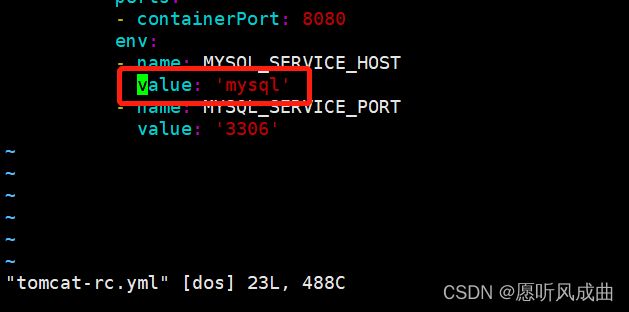
在浏览器上重新访问tomcat服务和连接数据库,均正常。
4.2 namespace命令空间
namespace做资源隔离,就是被隔离的资源都是有属于自己的环境
创建资源隔离
kubectl create namespace quyunlong
查看资源隔离

将yml文件添加namespace
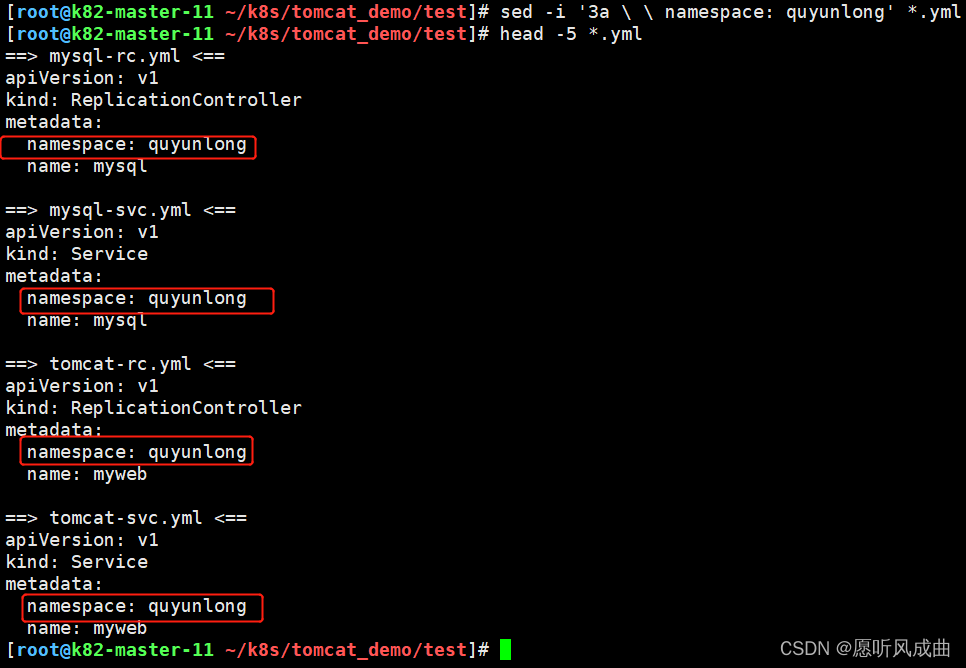
修改tomcat映射端口,防止冲突

创建yml文件,查看状态,映射端口30009
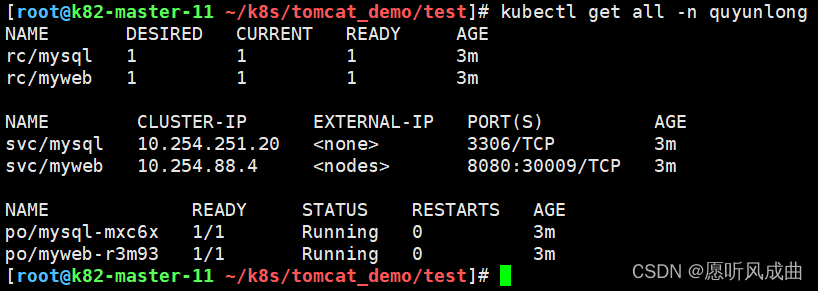
访问tomcat正常
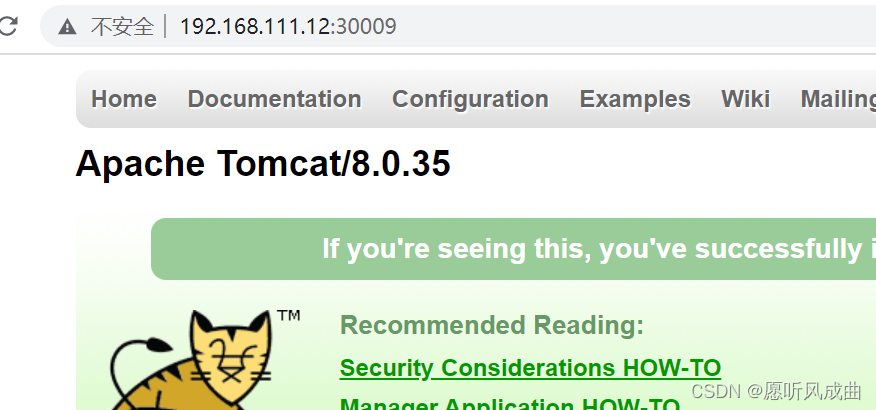
4.3 健康检查
4.3.1 探针的种类
livenessProbe:健康状态检查,周期性检查服务是否存活,检查结果失败,将重启容器
readinessProbe:可用性检查,周期性检查服务是否可用,不可用将从service的endpoints中移除
4.3.2 探针的检测方法
- exec:执行一段命令,看返回值,例如执行命令echo $?
- httpGet:检测某个 http 请求的返回状态码,例如正常2XX,不正常4XX、5XX等
- tcpSocket:测试某个端口是否能够连接,例如telnet探测端口是否通
4.3.3 liveness探针的exec使用
vi nginx_pod_exec.yaml
apiVersion: v1
kind: Pod
metadata:name: exec
spec:containers:- name: nginximage: 192.168.111.11:5000/nginx:1.13ports:- containerPort: 80args:- /bin/sh- -c- touch /tmp/healthy; sleep 30; rm -rf /tmp/healthy; sleep 600livenessProbe:exec: #执行命令看结果command:- cat- /tmp/healthyinitialDelaySeconds: 5 #初始5秒钟健康检查periodSeconds: 5 #周期性间隔时间5秒钟健康检查
测试方式:根据上面的脚本创建一个/tmp/healthy文件,执行的命令cat查看该路径的文件,30秒后删除该文件,就无法cat查看该文件;则重启该容器;
4.3.4 liveness探针的httpGet使用
vi nginx_pod_httpGet.yaml
apiVersion: v1
kind: Pod
metadata:name: httpget
spec:containers:- name: nginximage: 192.168.111.11:5000/nginx:1.13ports:- containerPort: 80livenessProbe:httpGet:path: /index.htmlport: 80initialDelaySeconds: 3periodSeconds: 3
测试方式:上面yml文件就直接get请求/index.html文件,进入容器中删除或者创建该文件,则容器能够get到该文件就会重启该容器
4.3.5 liveness探针的tcpSocket使用
vi nginx_pod_tcpSocket.yaml
apiVersion: v1
kind: Pod
metadata:name: tcpSocket
spec:containers:- name: nginximage: 192.168.111.11:5000/nginx:1.13ports:- containerPort: 80livenessProbe:tcpSocket:port: 80initialDelaySeconds: 3periodSeconds: 3
测试方法:创建yml文件,会探测80端口,如果80端口正常,则容器正常;进入容器中将该ng配置文件的80端口修改任意非80端口,则容器就会重启;
4.3.6 readiness探针的httpGet使用
vi nginx-rc-httpGet.yaml
aapiVersion: v1
kind: ReplicationController
metadata:name: readiness
spec:replicas: 2selector:app: readinesstemplate:metadata:labels:app: readinessspec:containers:- name: readinessimage: 192.168.111.11:5000/nginx:1.13ports:- containerPort: 80readinessProbe:httpGet:path: /quyunlong.htmlport: 80initialDelaySeconds: 3periodSeconds: 3
测试方法:
1.手动创建svc端口映射
kubectl expose rc readiness --post=80 --type=NodePort
2.创建该yml文件,系统默认不会存在quyunlong.html文件。所以该pod不会加入到svc中,容器也是掉线状态。进入容器中创建quyunlong.html则该pod会加入到svc中,并且容器时健康的状态;
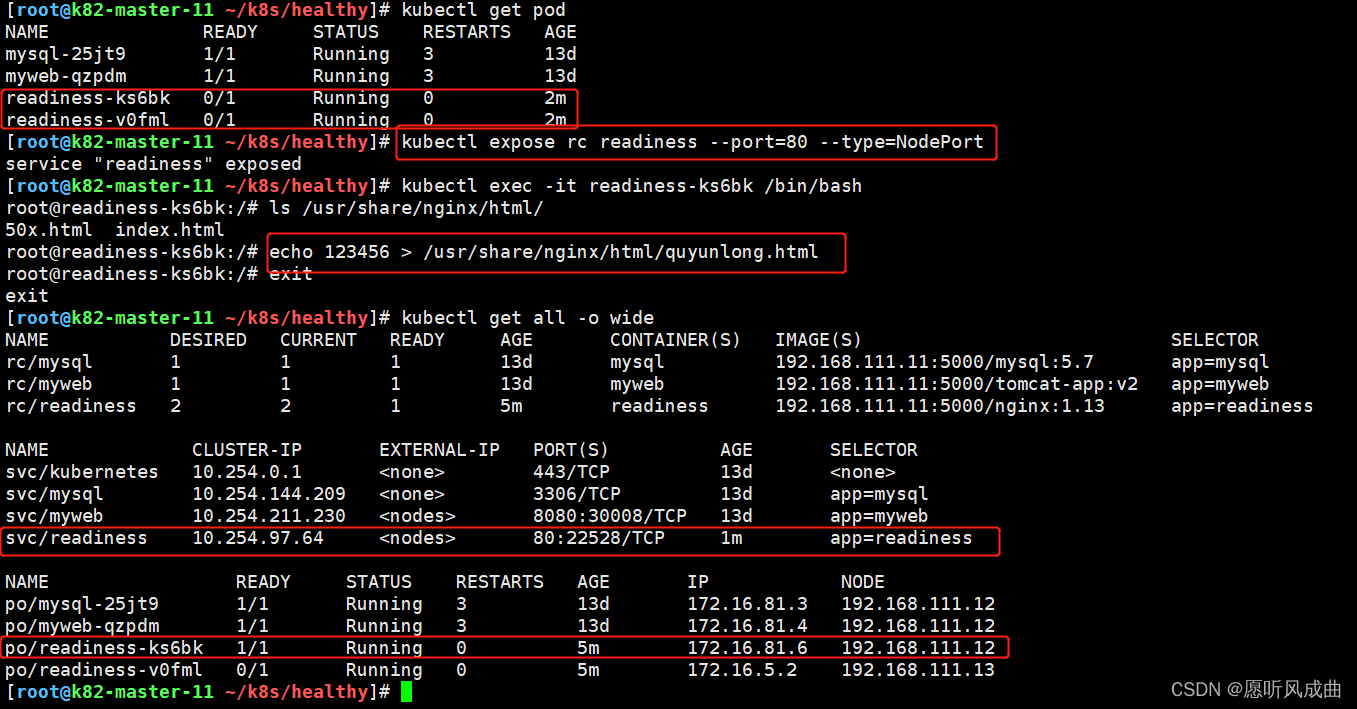
pod与svc对应的端口映射与地址
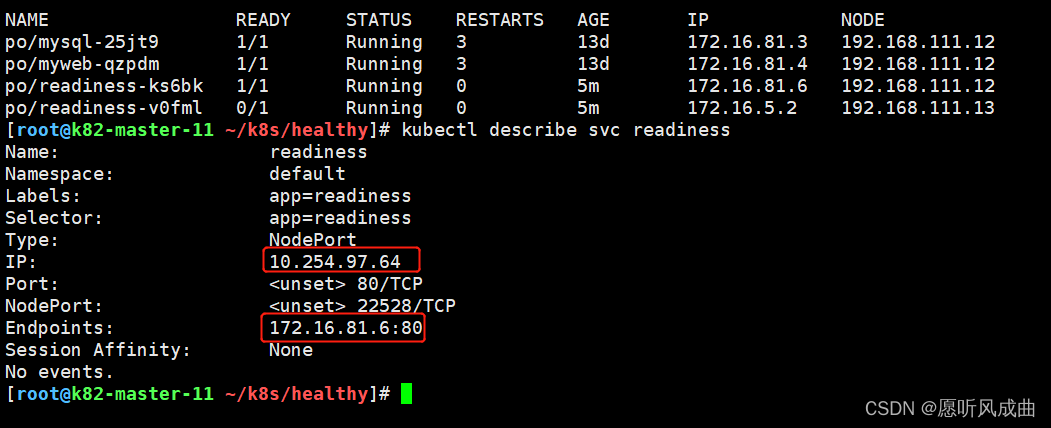
4.4 dashboard服务
1:上传并导入镜像,打标签

2:上传两个yaml文件,创建dashborad的deployment和service;注意修改yml文件的镜像地址

3:访问http://192.168.111.11:8080/ui/
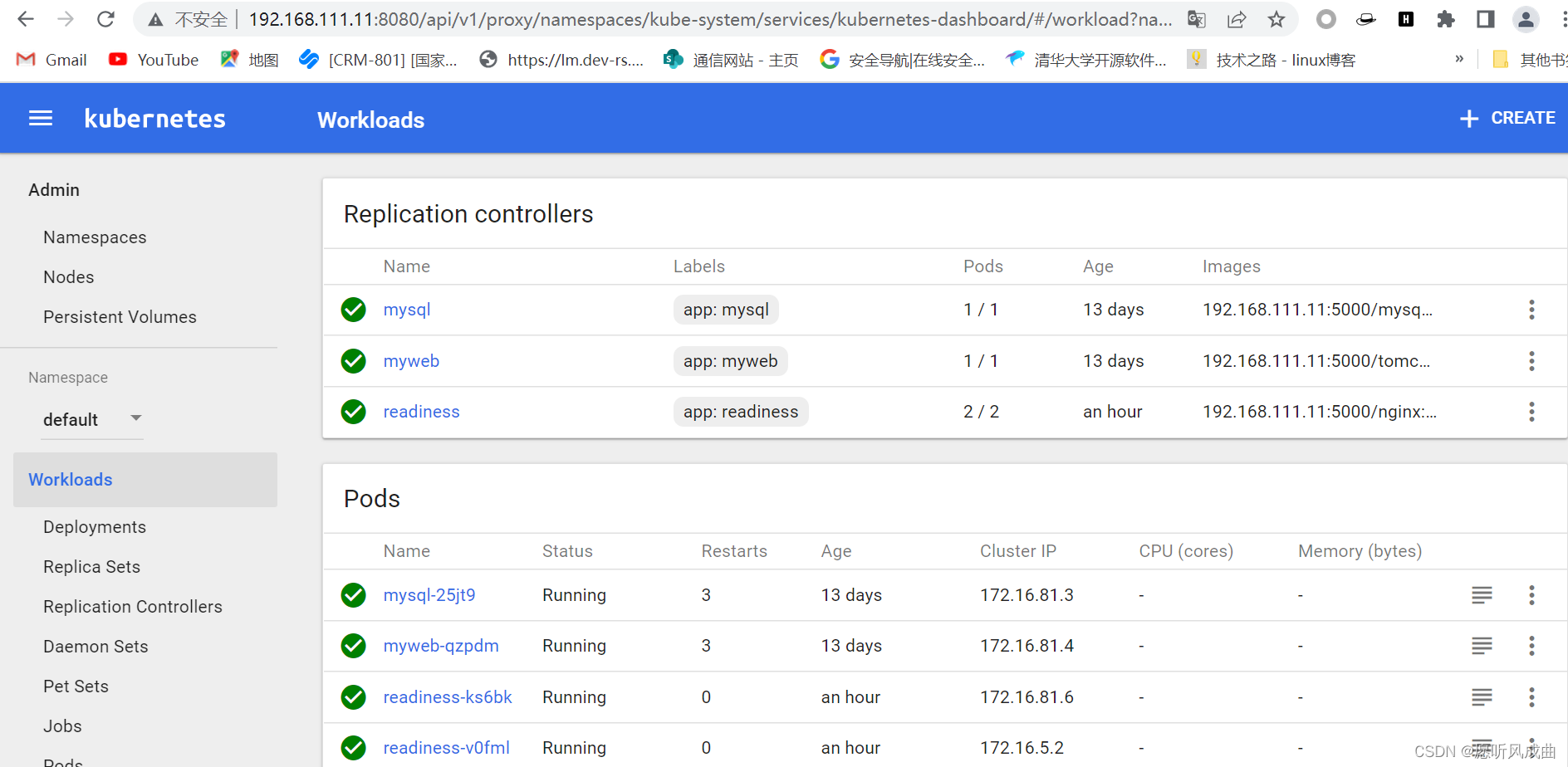
4.5 通过apiservicer反向代理访问service
第一种:NodePort类型,这种类型直接使用nodeIP和port访问即可
type: NodePortports:- port: 80targetPort: 80nodePort: 30008
第二种:ClusterIP类型,这种类型就是通过apiserver反向代理方式访问服务
type: ClusterIPports:- port: 80targetPort: 80
通过上面访问dashboard服务就是通过apiserver方式,也就是类型为:tyep:ClusterIP
http://192.168.111.11:8080/api/v1/proxy/namespaces/kube-system/services/kubernetes-dashboard/
http://192.168.111.11:8080/api/v1,表示apiserver的地址
proxy:表示代理的方式访问
namespaces=kube-system,表示选择哪个命名空间;
services=kubernetes-dashboard,表示svc的名字
测试验证,创建一个的rc和svc;类型为ClusterIP
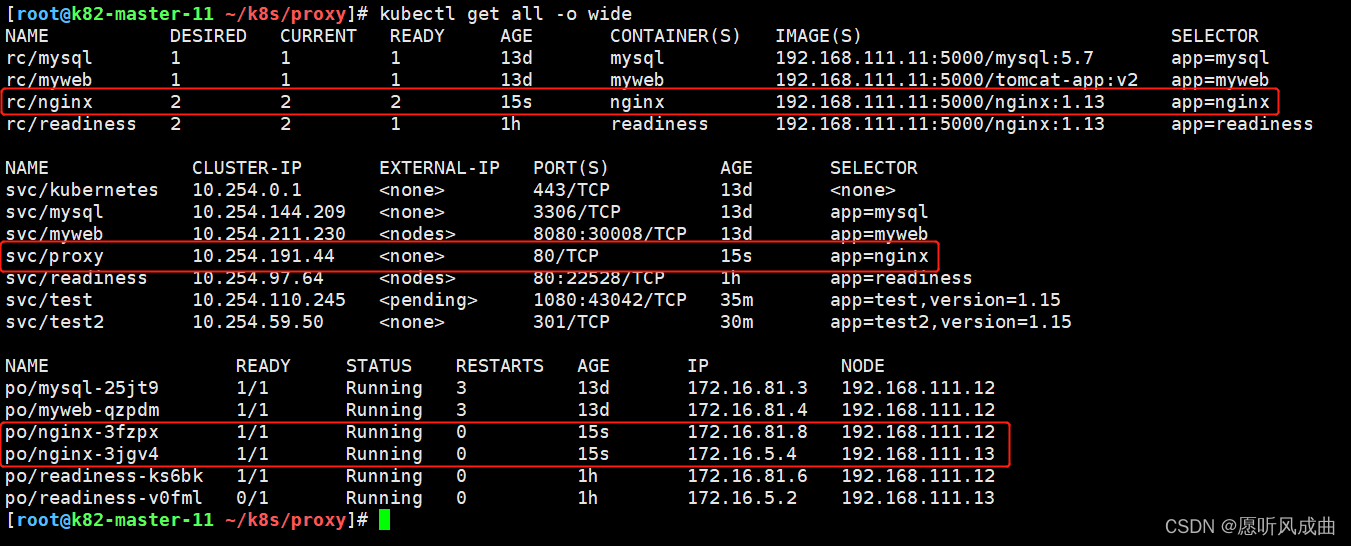
根据apiserver代理方式链接的格式进行拼接访问ng服务
http://192.168.111.11:8080/api/v1,表示apiserver的地址
proxy:表示代理的方式访问
namespaces=default,表示选择哪个命名空间;
services=proxy,表示svc的名字
#拼接之后的NG服务链接
http://192.168.111.11:8080/api/v1/proxy/namespaces/default/services/proxy/
访问链接成功出现NG界面
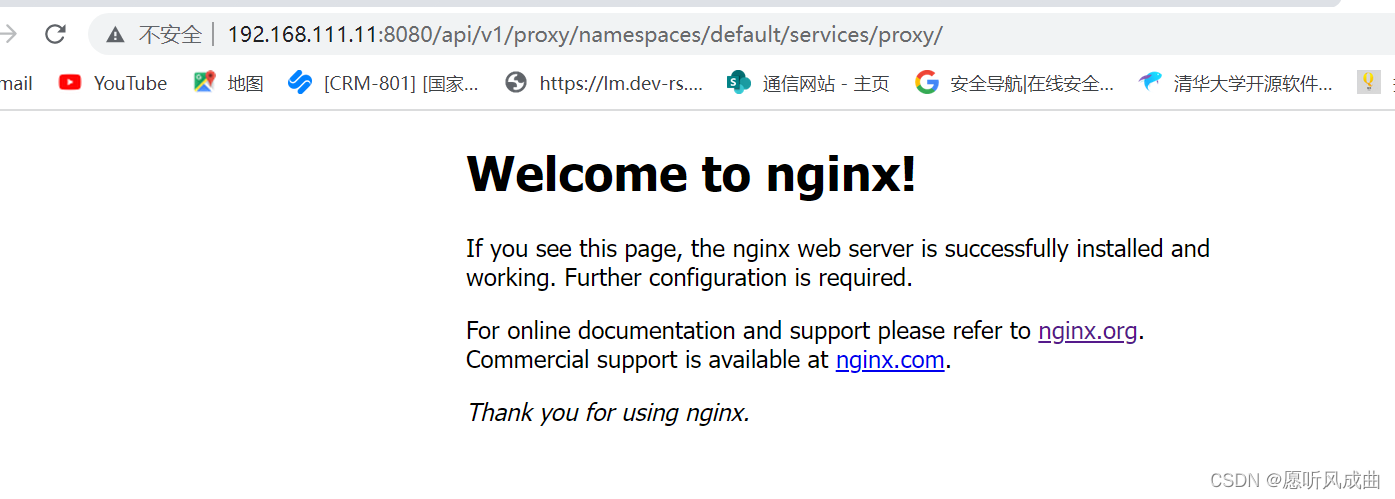

)
















)
新特性)